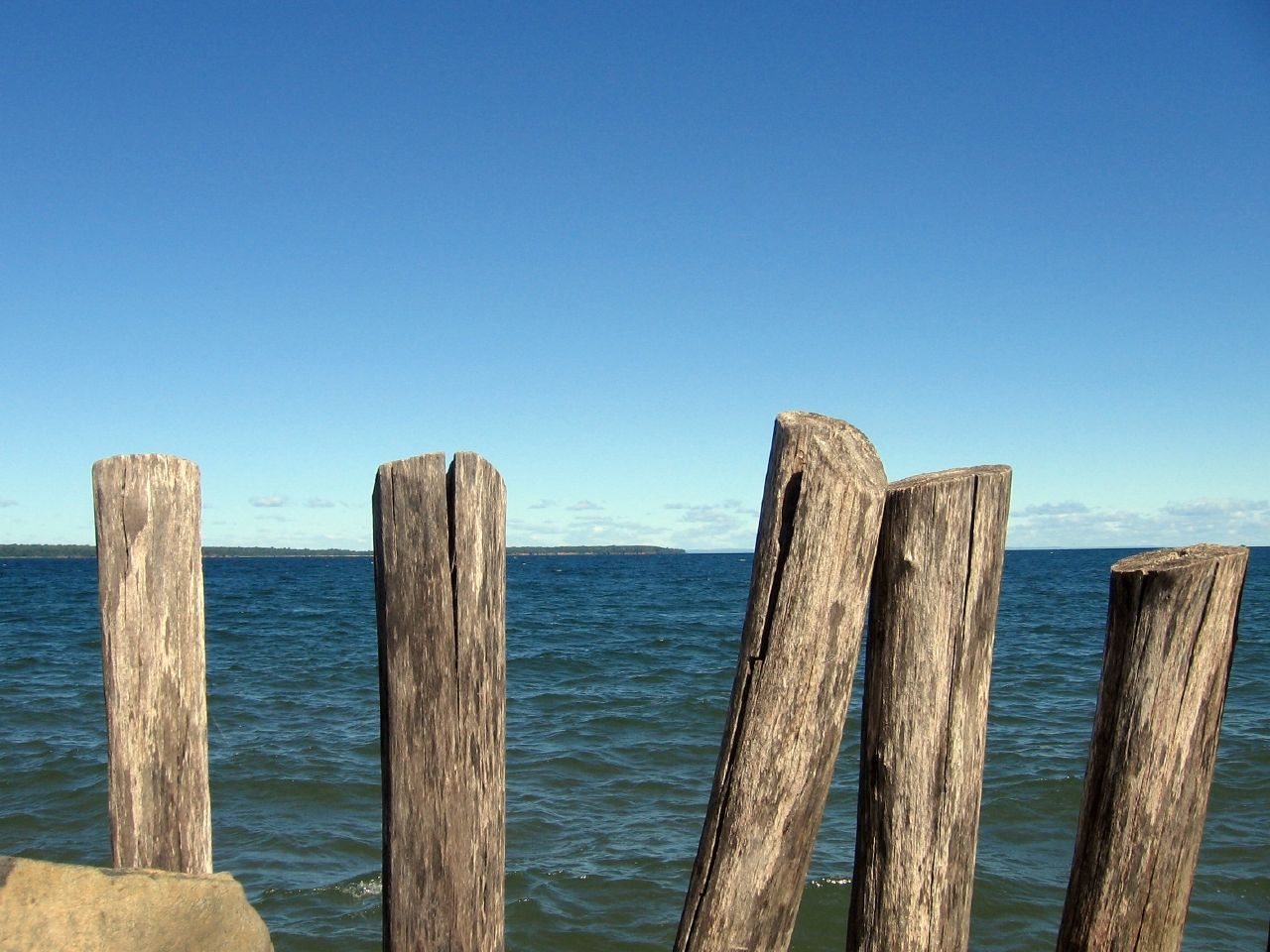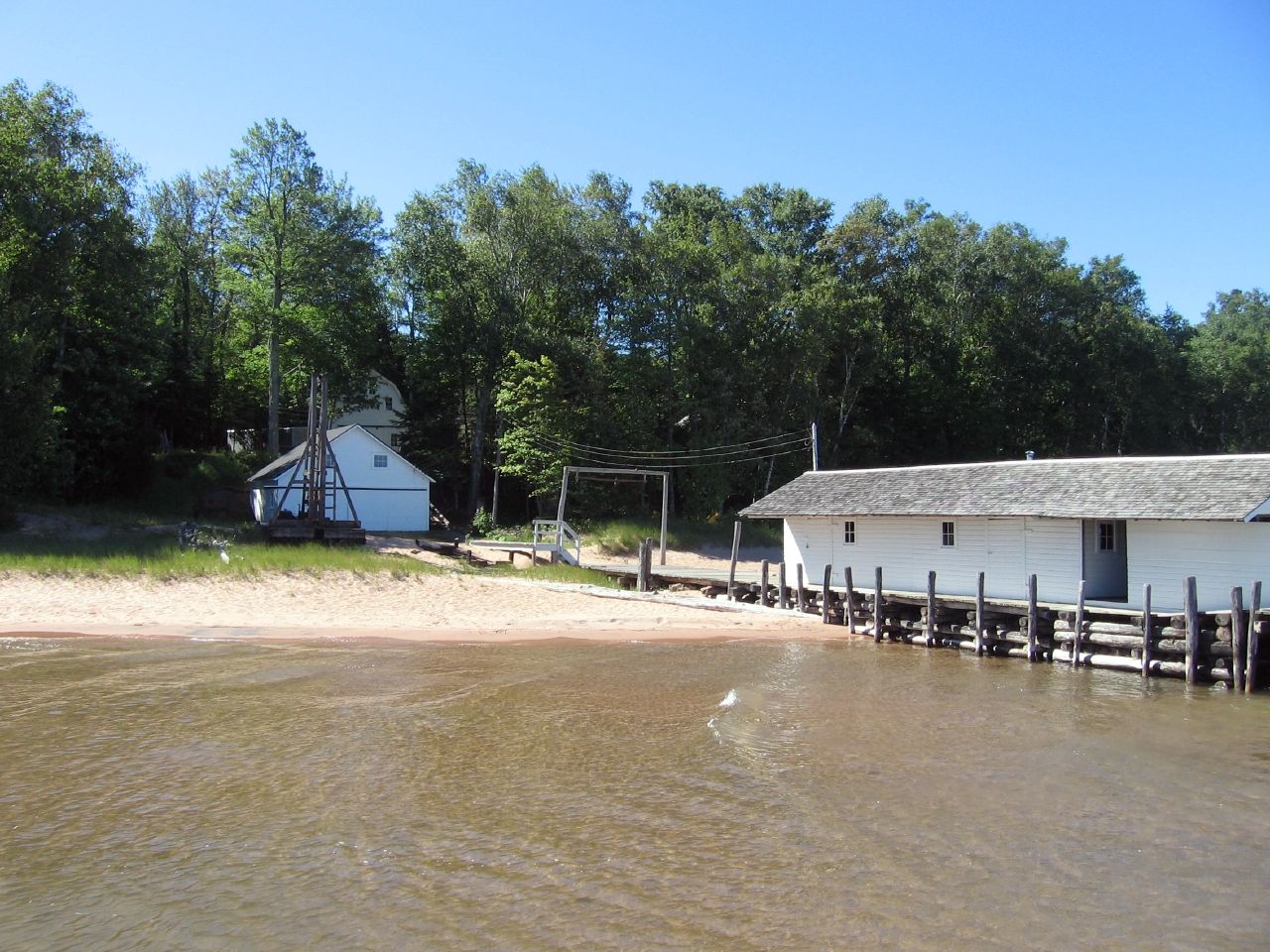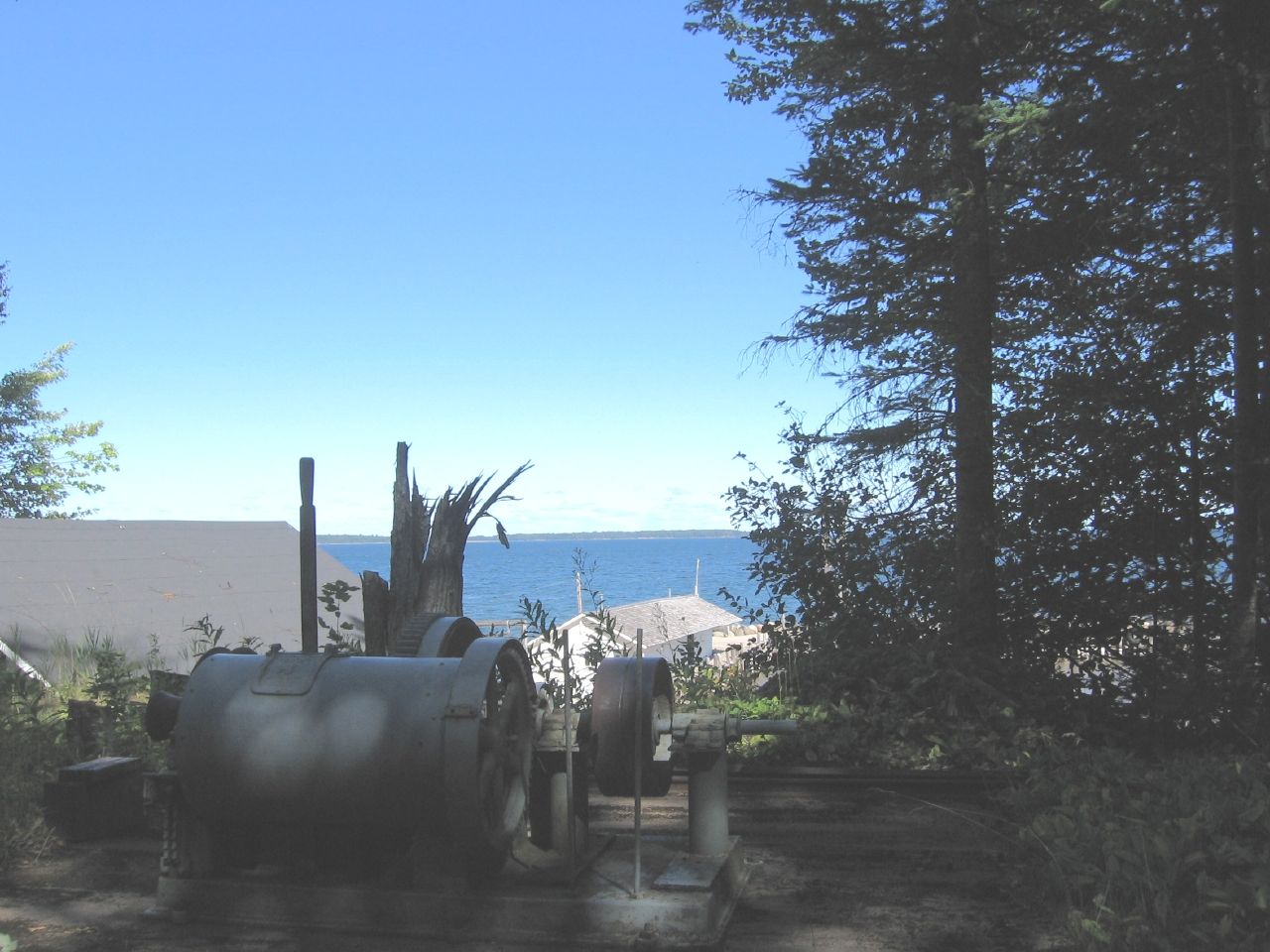Apostle Islands National Lakeshore, Bayfield County, Wisconsin, USA (August 2007)
Little Sand Bay hugged the northern edge of the Bayfield Peninsula. It fell between Point Detour and Sand Point, a gateway to the westernmost Apostle Islands. A National Park Service visitors center could be found there. It included a campground, a marina, and the historic Hokenson Brothers commercial fishery.
An anchor from the bulk carrier Sevona rested on the property. Four pylons and a chain encircled it, a reminder of the fury of Lake Superior. The Sevona wrecked off the northeast corner of Sand Island, just a few miles away from Little Sand Bay. Seven people lost their lives on the Sevona in 1905. A hundred years later the ship’s anchor served as a memorial to that terrible event.
The Hokenson Brothers

The three Hokenson brothers failed as farmers. Instead they became commercial fishermen, choosing Little Sand Bay as their base in 1927. They remained there for more than 30 years. A short path led westward from the visitors center to the well preserved fishery buildings and equipment, now listed on the National Register of Historic Places.
A small wooden box at the trailhead contained tri-fold brochures. These described the layout and purpose for each part of the fishery. People could purchase brochures for a small fee and take them home or use them for free and return them after their visit. Most of the information on this page comes from that National Park Service document.
The view in the photograph above points out from the fishery dock. The brothers set sail from this beautiful spot on Lake Superior each morning in their homemade tug, Twilight. They searched for whatever the lake would provide. During the warm months they set pound nets and collected fish that gathered and couldn’t escape from their underwater pens. In the late fall they harvested tons of spawning lake herring, a small whitefish, using gill nets stung behind the tug in long strands.
They followed the seasons, the natural rhythms of the lake and the fish, and provided sustenance for themselves and their families. The brothers made a decent living in the days before overfishing and invasive lampreys hobbled the Great Lakes fishing industry.
The Fishery Operation

The ice house is the small building with the pitched roof in the background. The brothers walked onto the frozen lake in deep winter, cut rectangular blocks of ice from the surface, and stacked them tightly in the ice house, taking care to insulate them with snow and sawdust. Ice stored properly lasted well into the following summer and preserved fish for transport by rail to markets as far away as Chicago and New York.
There is a triangular shaped object on the lawn directly in front of the ice house, partially obscuring the left side of it. That is a pile driver raft. The Hokenson brothers towed this raft onto the lake each spring and used it to pound poles in place for the appropriately named pound nets.
The Herring Shed can be seen on the right side of the photograph, built on top of the dock. When herring came off the tug in late fall, they fed into the shed for processing in an all-family assembly line. The completed effort resulted in barrels of salted herring ready to be shipped to market.
Equipment

We examined other artifacts found atop a short bluff a few dozen yards up from the lakefront. The brothers had to bring their gill nets out of the water after each use to let them dry so they wouldn’t rot. Nets were spooled onto the gill net reel on the left forefront of the photo for that purpose. They also used the winch at the center to haul all types of heavy equipment up from the shore.
These resourceful brothers took advantage of automation whenever possible to help them run the fishery. Further in the background and down the bluff appear, once again, the roofs of the ice house and herring shed described earlier.
There were other important building in this historic complex that are not included in these photographs. The most significant was the nearby home once occupied by Roy Hokenson and his wife, now converted into a residence for National Park Service employees. Also nearby was a twine shed used to store fishing equipment, machinery, tools, and everything else needed to keep the fishery running smoothly.

Leave a Reply